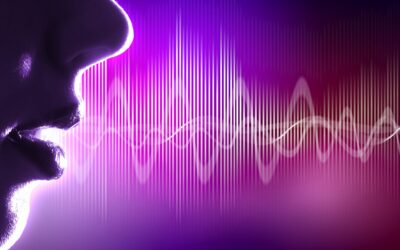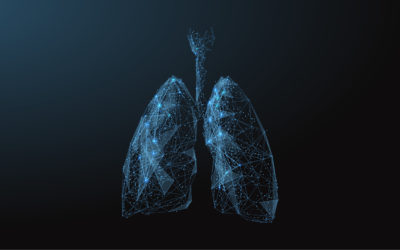Article by Todd J. Schwedt, M.D.
The opinions expressed below are his own and are not official positions of the Mayo Clinic.
For many of us who experience migraine, the symptoms are familiar. Before the pain begins, we notice warning signs – i.e. we become more irritable or more sensitive to light and sounds; and this serves as a cue to intervene (if possible) by taking medication or meditating in an attempt to prevent the headache or to reduce its severity.
However, many people don’t recognize their premonitory symptoms, or they try to ignore them hoping the migraine never happens. But if the migraine happens, these symptoms are amplified. There is anecdotal evidence that speech is one of the motor functions that is especially sensitive to migraine. A very compelling example of this is provided in the video below, where a news reporter loses her ability to speak as a result of a migraine onset:
Reporter Serene Branson: Not a Stroke Just a Migraine (02.18.11)
It’s relatively common for patients to report speech changes with migraine when they visit us in clinic. Surprisingly, though, there has been very little research into the topic. So we decided to conduct the research ourselves. In a recent study we asked “Are there changes in speech that precede oncoming migraines?” We discuss the results of our study below.
What is migraine and why do we want to predict it?
Migraine is a neurological disease that afflicts 38 million Americans and nearly 1 billion people worldwide. A migraine attack consists of moderate to severe headache, heightened sensitivities to light and sound, nausea, and sometimes vomiting. Migraine can cause substantial disability due to pain and other symptoms, and routine physical activities often worsen those symptoms. Most commonly, treatment consists of non-steroidal anti-inflammatory drugs (NSAIDs), combination analgesics, or triptans.
A migraine attack can consist of several phases: the premonitory phase, aura phase, headache phase, and the postdromal phase (often termed the “migraine hangover”). Most individuals with migraine experience a premonitory phase, which typically starts several hours prior to onset of other migraine attack symptoms; during which there are at least subtle signs or symptoms that warn the patient a full-blown migraine attack is imminent. When asked, individuals most commonly report symptoms of tiredness, cognitive dysfunction, irritability, neck discomfort, generalized malaise, and increased sensitivity to lights, sounds, and odors.
Accurate recognition of the premonitory phase of the migraine attack is valuable because it allows an individual to take actions that might prevent the oncoming full-blown migraine attack, or at least to reduce the symptoms and impact of the attack. The most accurate method for detecting the premonitory phase of migraine would be through the combined use of patient recognized symptoms with objective physiologic and neurologic indicators of an oncoming migraine attack.
Why speech?
Our hypothesis was that subtle changes in speech and language are likely to be useful indicators of the premonitory phase and predictors of an impending full-blown migraine attack. The production of speech and language requires a complex interplay of multiple brain regions that are responsible for thinking of the words and message that one wants to convey, as well as those regions responsible for the complex motor movements required to speak.
Our research study demonstrates within-person changes in several speech parameters during the premonitory and headache phases of the migraine attack compared to the between attack period. Although these subtle changes could be detected objectively, individuals often failed to recognize that they had any changes in their speech, showing that objective measures can be more sensitive than self-report. The details of the study can be found here.
What’s next?
One of Aural Analytics’ goals is to continue to develop software that accurately predicts oncoming migraine attacks. This technology could be used by individuals as a ‘migraine forecast,’ indicating their likelihood of developing a migraine attack on a given day. Speech can be collected using mobile devices (e.g. a cell phone), either passively when talking on the phone, or actively via completion of specific speech tasks. Paired with a daily headache diary, the software would be trained to recognize speech patterns associated with impending migraine attacks. Once trained to identify an individual’s personalized symptoms, the migraine forecast is ready to warn the individual when there is evidence that they have entered the premonitory phase of a migraine attack. The individual can then take measures to mitigate or prevent the oncoming migraine attack. Although acute treatment of the migraine attack during the premonitory phase has not been fully investigated, recognition of the premonitory phase would allow for the use of acute migraine treatments before the headache phase, possibly preventing the migraine attack from fully developing. Beyond the day to day utility for migraine sufferers, their families, employers and providers, there is also significant value to pharmaceutical companies in their pursuit for better pharmacological therapies.
Clinicians in our field know that treatment of the migraine attack early after onset of the headache provides substantially superior outcomes compared to treating a couple of hours or longer after the headache has developed. Treatment of the migraine attack even earlier, prior to onset of the headache, might prove to be even more effective. The ability to prevent onset of the migraine headache and other full-blown migraine symptoms via treatment during the premonitory phase may substantially reduce the pain, functional impairment, and disability associated with migraine and have profoundly positive impacts on patient quality of life.
About Todd J. Schwedt, M.D.
From Mayo.edu (Source):

“Research in the Neuroimaging of Headache Disorders Laboratory of Todd J. Schwedt, M.D., utilizes advanced magnetic resonance imaging (MRI) techniques to study migraine and concussion. This includes structural measures, such as diffusion tensor imaging and cortical thickness, as well as functional measures, including event-related functional magnetic resonance imaging and resting state functional connectivity.
The goal of Dr. Schwedt’s research is to identify imaging biomarkers that will assist in diagnosing, treating and prognosticating outcomes for patients with migraine and concussion.”





